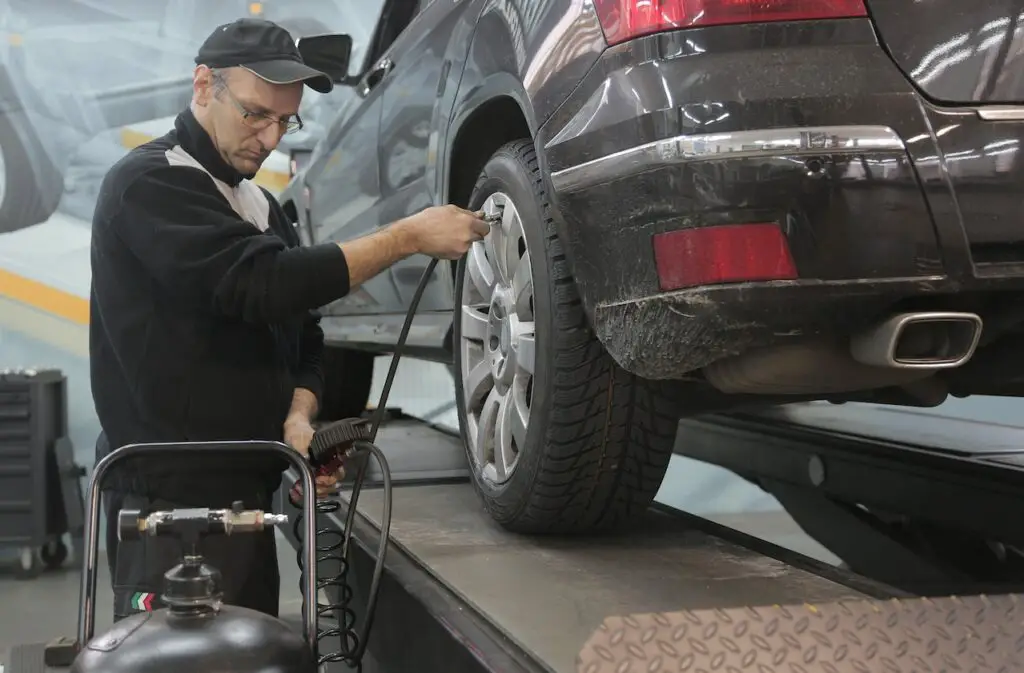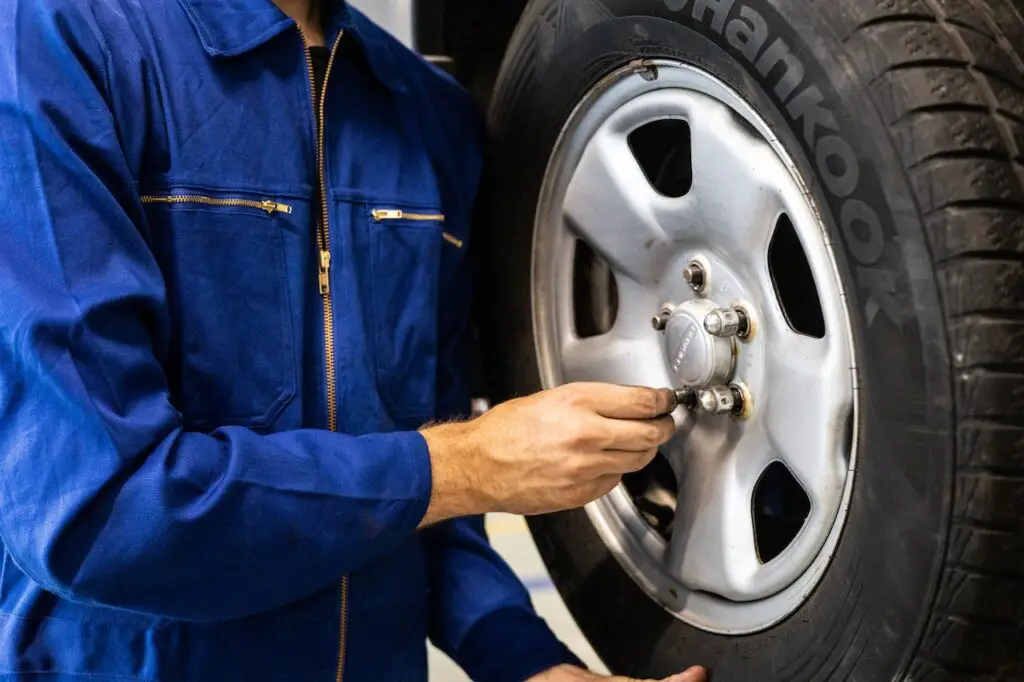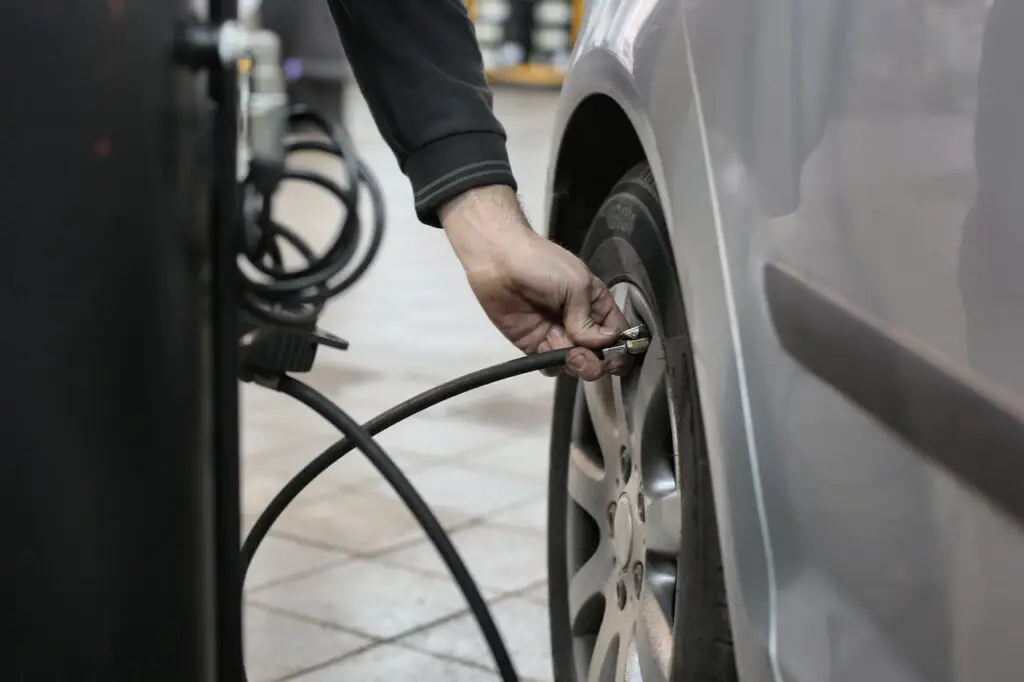The Husky compressor machine is a popular compressor used in households. They’re recommended for first-time users because it’s easy to use. In this article, we’ll teach you how to use a Husky air compressor for tires that need filling.
Contents
How to Use a Husky Air Compressor for Tires
Using a husky compressor for tires operates almost the same as regular compressors. Your product may come with a manual, so it’s better to follow it first before referring here. If it’s hard to understand, you can use this article as a reference.

Here’s how you can use a Husky compressor for tires:
Identify the Tire Pressure
The first thing you have to do is to know how much pressure you will need for your tires. Knowing the exact pressure to put on your tires ensures it will perform optimally. You also won’t have to encounter problems frequently in the future.
Most vehicle tires require around 150 pounds of pressure and 32 to 35 PSI. You must also consider the weather, axle load, and tire axle. You can usually check the car’s manual to know how much PSI is needed.
Also, knowing the tire gauge makes it easier to know how much air pressure the tires need. You also have to consider the tank of the compressor to know how much application you can do in a given time.
Prepare the Tire
Most tires have one stem cap, usually located at the top side of the steam valve. Remove the cap to start the air-filling process. Make sure you place the cap somewhere secure since you will need it for resealing.
Once you remove the cap, air will leak out from your tires. Therefore, you should do this quickly and when ready to use the compressor.
Set up the Air Compressor
Most compressors for tires run by plugging them into an electric source. Some compressors can run on battery, and they’re portable. However, they won’t be good for large tires. For the plug-in Husky compressor, ensure you plug it in the accurate voltage.
Turn on the compressor by switching the ON/OFF button of the Husky compressor. You can refer to the manual to know where it’s located. Attach the hose to your compressor along with a rapid coupler. This allows for air to push into the steam valve.
You can turn off your compressor after testing. Proceed to secure the air hose to the cap and valve stem, and then switch on your compressor. All you have to do is wait until your compressor fills your deflated tire.
Determining When the Tire Is Full
You can use a tire gauge to determine the tire pressure and to know the exact count of air in the tire. You can also use automatic inflators that show the gas readings and helps when to stop filling the air.

Monitor the Process
As the process is ongoing, check for any potential problems. Spot any leaks or damages in the hose or tire. Otherwise, you’ll just keep inflating the tire, and it will still leak.
For example, there’s a hole in the tire that causes the leak. That’s why even if you continue to inflate the tire, it will deflate fast, depending on how large the hole is.
Drain the Compressor
Now that the filling process is done, it’s time for the cleanup. Once the tire is filled with the right amount of air, remove the air hose and seal the tire with the cap you removed from the valve.
You may be hearing some hissing noise as you put on the cap. This is normal as the air is escaping from the tire. If there’s still noise after sealing it, then the tires may have a problem.
The draining process is easy; you just have to use the drain valve to drain the liquid off of your compressor tank. Make sure to let it dry so that no moisture gets trapped inside the tank.
Things You Need for Using Husky Compressors
There are things that you need to have in order to properly use the Husky Compressor. These are the following:
- Regulator – ensures you’re using the right amount of airflow of compressed air. Therefore, the air pressure will not exceed the recommended limit. It makes the inflating process safer.
- Pressure gauge – helps you monitor the pressure inside the tires. This helps me calculate the amount of air needed to fill the tire. It makes it easier to identify if the tire pressure is lacking, the right amount, or too much.
- Tire chuck – used for inflating compressed air in tires. It secures the tire valve stem during maintenance. It also helps monitor and maintains correct tire inflation.
Common Terms Used in Operating Husky Compressors
You might encounter unfamiliar words that you don’t know the meaning of. I’ve compiled a list of words that are commonly used and useful when operating a Husky Compressor:
- PSI – compressors have a PSI rating and stand for pounds per square inch. It refers to the amount of pressure that the compressor can produce. The higher the PSI, the faster the compressor can inflate tires.
- CFM – stands for cubic feet per minute. CFM refers to the compressor’s airflow rate. It predicts the amount of air the compressor can produce at a specific pressure before it needs to recover. The higher the CFM, the faster you can fill tires.
- Duty Cycle – refers to the time your compressor can run continuously. It is usually measured in percentage. 100% means 1 hour, so a compressor with a 100% duty cycle can operate for 1 hour. A higher duty cycle means longer, uninterrupted operation.
- Design Pressure – refers to the max continuous operating pressure. It is usually measured by the manufacturer and is known as maximum working pressure.
- Compression Efficiency – the ratio of the theoretical to the actual work needed to compress air. It measures how well the compressor performs in actual use compared to what the manufacturer predicted would be its effectiveness.

Safety Measures When Using a Husky Air Compressor
Most Husky compressors will contain safety precautions inside their manual or the product itself. Some of the information may include the following:
- Read the manual and make sure you take in all the information.
- Never use your Husky compressor without reading the safety precautions.
- Drain the tank regularly to avoid rusting.
- Keep your compressor away from children and other people who don’t know how to operate it.
- Inspect the electric component and air system for faults or leakage.
- Stop the motor when you notice an abnormality in its vibration.
Related Questions
How Do You Connect a Hose to a Husky Air Compressor?
Connecting the hose to some model of Husky compressors is as simple as wiggling it in the valve. Some models may require thread tape, a hose adapter, and a wrench.
How Do I Turn On My Husky 8 Gallon Air Compressor?
You can turn on a Husky 8-gallon air compressor simply by turning on the AUTO/OFF switch. Check the compressor manual to find out where the switch is located.
How Do You Break In a Husky Air Compressor?
There is no break-in period for Husky compressors. You can just fill the tank once and empty it to break in.
Conclusion
Using a Husky air compressor for tires is easy. Just follow these steps, and you’ll be fine. If you are still unsure, you better get a professional to teach it. The compressor works the same as other general compressors, so you should be fine if you have used one before.
